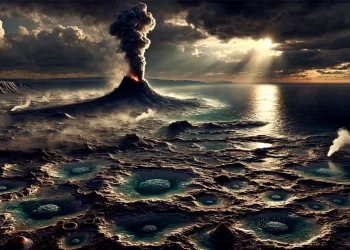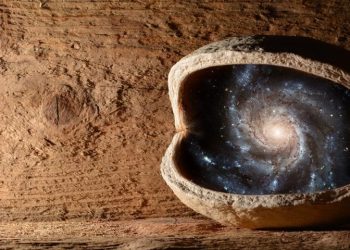Although humankind has still not developed the necessary technology to travel to the outermost parts of our solar system, we have developed throughout the year’s many spacecraft that have pushed the boundaries of space exploration. One such spacecraft is the Juno Mission, exploring Jupiter, Ganymede, and more.
During its flybys, the spacecraft is studying, among other things, Jupiter’s atmosphere, its raging storms, and the characteristics of some of its most prominent moons. However, as it does science, Juno also acts as a professional photographer, snapping mind-bending photographs of the Gas Giant and its natural satellites.
What Juno’s cameras see
Some of these photographs are then stacked together and fitted into one file, producing a video of what Juno’s cameras see as the spacecraft explores the system.
Now, NASA has reported that the photographs taken by the Juno mission during the recent flyby of the moon Ganymede and the planet Jupiter have been assembled into an immersive three-and-a-half-minute video, offering an unprecedented view of two fantastic celestial bodies in our solar system.
The photographs are outstanding and were possible thanks to the fact that the probe flew closer to Jupiter’s largest moon, Ganymede, than any other spacecraft in more than two decades, the mission’s website reported.
The NASA spacecraft made its 34th flyby of Jupiter in 2021, traveling from one pole to another in less than three hours above the planet’s constantly shifting atmosphere.
Scott Bolton, the principal investigator for Juno from the Southwest Research Institute in San Antonio, said, “The animation is a way for people to imagine exploring our solar system firsthand by seeing what it would be like to be orbiting Jupiter and flying past one of its icy moons.”
As we approach the exciting prospect of humans being able to visit space in orbit around Earth, this propels our imagination decades into the future, when humans will be visiting the alien worlds in our solar system,” Bolton added.
Fly Over Jupiter and Ganymede
The video starts with Juno nearing Ganymede, passing 1,038 kilometers from the surface at a relative speed of approximately 67,000 km/h.
The images show several of the moon’s dark and light regions and the Tros crater, which lies between the bigger and brighter scars on the alien Moon. In the video, we can clearly observe the darkest regions are believed to be the result of sublimation of the ice in the surrounding void, leaving darker debris on the surface, the researchers have explained.
The spacecraft is traveling at incredible speed as it explores the Jovian System. In fact, according to the mission website, Juno needs no more than 14 hours and 50 minutes to travel approximately 1,182,000 kilometers between Ganymede and Jupiter.
In this video, the viewer is transported just 3,400 kilometers above Jupiter’s spectacular cloud tops and the turbulent atmosphere. As you watch, Jupiter’s mighty gravity causes Juno to accelerate to nearly 210,000 kilometers per hour, relative to the planet.
Amazing NASA Video Filmed by Juno
The video offers the viewer an unprecedented look at some of the most prominent features on the Gas Giant’s surface; among the Jovian atmospheric features that can be distinguished in the view are circumpolar cyclones at the north pole and eight massive storms twisting counterclockwise in the southern hemisphere that resemble white ovals.
Don’t forget to check out this video of Juno’s view of Europa.
Juno launched into space ten years ago, on August 5, 2011, from Cape Canaveral, entering a polar orbit around Jupiter five years later, on 5 July 2016. Juno is the second spacecraft to explore the Jovian systems after the Galileo Mission, which studied Jupiter and its moons from 1995 to 2003.
Join the discussion and participate in awesome giveaways in our mobile Telegram group. Join Curiosmos on Telegram Today. t.me/Curiosmos











